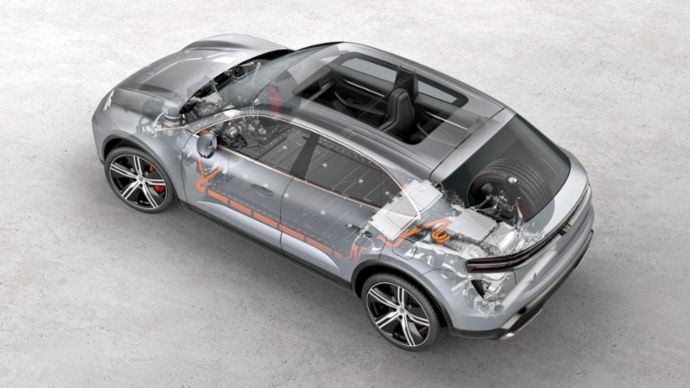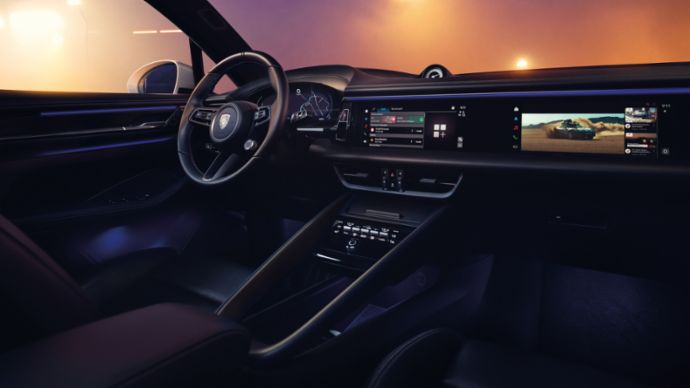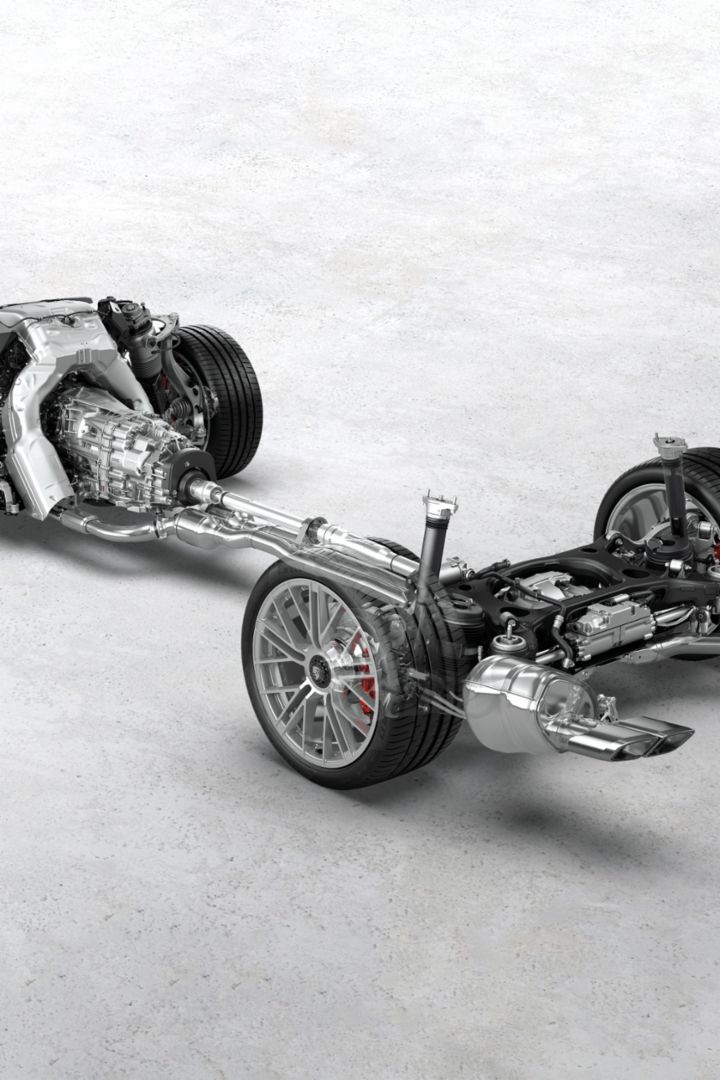Peace and Quiet on the Road
Virtuoso engine sound, casual conversation, and exceptional music – these sound experiences can be further enhanced with the optional thermally and noise-insulated glass.
Illustration: Design Hoch Drei
Outside noise is most noticeable when entering a highway tunnel, where the concrete walls reflect the driving noise into the car interior, where it rises to a roaring crescendo. You have to speak more loudly, and occasionally the sound system turns up the volume of the music and voice prompts. “These differences reveal the impact that outside noise can have on driving comfort,” says Jürgen Ochs, Head of Sound Quality, Car Bodies, at Porsche. “The type of glass in the vehicle plays a key role in acoustic comfort. And its effect can be precisely measured – whether on an exposed stretch or in a tunnel,” he explains. That’s why a sophisticated thermally and noise-insulated glass is available for all four-door Porsche models.
Unlike the conventional single-layer safety glass used for the sides and rear, this glass features five layers: glass, three layers of film, and then glass again. The middle layer of the three polyvinyl butyral (PVB) films is a special acoustic film that absorbs much of the oscillation of the surrounding glass and thus reduces outside noise by up to 7.3 percent in a frequency range of 630 hertz to 6.3 kilohertz. “That doesn’t sound like much, but everyone who’s ever tested the difference in driving conditions is impressed,” adds Ochs. It effectively covers the range that the human ear is most sensitive to, which is approximately 3.5 to 4.0 kilohertz. Police, fire engine, and ambulance sirens remain just as loud as always, as they fall within the frequencies between 360 and 630 hertz virtually all over the world.
Porsche installs the noise-insulated glass throughout, including in the tiny triangular panes and, of course, the rear window. Secondary effect: acoustic glass weighs a little less than standard glass. In the case of the Panamera, the reduction in weight is around two kilograms. In addition, the extra layer of film makes the glass more resistant to break-ins. The additional insulation can always be ordered in combination with the thermally insulated glass, which looks no different from the standard glass. The thermally and noise-insulated glass can, of course, also be combined with the ever-popular privacy glass. The lightweight glass option offers comparable noise reduction for two-door models.
Consumption data
911 Dakar
-
11.3 l/100 km
-
256 g/km
-
G Class
Macan 4 Electric
-
21.1 – 17.9 kWh/100 km
-
0 g/km
-
A Class
Macan Turbo Electric
-
20.7 – 18.8 kWh/100 km
-
0 g/km
-
A Class




